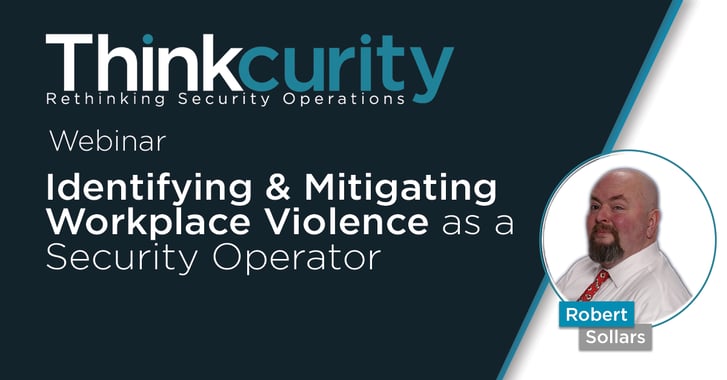We’ve seen it happen in movies. You might have seen it happen on one of the properties you secure. A security guard is working in an office building. A freshly fired employee comes out of the boss’ office screaming and cursing. All of a sudden they turn around and go after the boss.
Or you’re running a security contract at a retail store. A crazy customer doesn’t get their way and starts threatening employees and other customers. What do you do?
Unfortunately workplace violence is an under covered topic in the private security industry. Whether security companies don’t fully understand what exactly workplace violence is or don’t believe they have a critical role to play in preventing it, there definitely seems to be a lack of attention given to the topic.
But it doesn’t have to be that way. Check out part 1 of this 2-part webinar series on workplace violence training for security operators.
 In the meantime, this article will be covering the basics of workplace violence as it relates to the security industry - including what classifies workplace violence and why private security companies absolutely need to play a role in its prevention.
In the meantime, this article will be covering the basics of workplace violence as it relates to the security industry - including what classifies workplace violence and why private security companies absolutely need to play a role in its prevention.
What Exactly is Workplace Violence?
The first step to effective workplace violence prevention for security companies is to understand exactly what it is. OSHA defines workplace violence as “any act or threat of physical violence, harassment, intimidation, or other threatening disruptive behavior that occurs at the work site. It ranges from threats and verbal abuse to physical assaults and even homicide.”
In 2018 in the U.S., 20,790 private industry workers experienced trauma from nonfatal workplace violence and 453 workers died of homicide in the workplace. In fact, homicides are the second leading cause of all job-related deaths and the leading cause of death for women, with only motor vehicle related deaths being higher overall.
And workplace violence doesn’t just mean coworkers fighting or a dispute between an employee and an employer. It also includes customers and visitors causing harm to employees and other people on the property.
One of the biggest sources of workplace violence actually starts at home. 40% of workplace violence starts out as domestic violence that spills over into the victim’s organization. And many times when this happens, the intended victim isn’t the only casualty of the violence. A domestic violence dispute that occurs in the workplace can injure and traumatize other employees or visitors of the business.
Now that we’ve covered exactly what counts as workplace violence, who it affects, and where it can start, we can talk about why you as a security services provider should play a role in preventing it.
Why Security Companies Should Assist in Workplace Violence Prevention
There are a number of reasons why security companies should be actively working with their clients to prevent workplace violence. The first and most obvious is to keep your own security guards safe. But beyond that, there are two primary reasons for you to participate in your clients’ workplace violence prevention strategies.
1. It’s part of keeping the property secure for your client.
As a security service provider, keeping the property safe and secure means more than just the physical property. Your client likely doesn’t hire you just to check that doors are locked and that lights aren’t broken. Keeping people safe is much more important than keeping property safe.
Workplace violence prevention is a security concern, and when you win a contract, you are hired to be the security expert. By going through workplace violence training you are better equipped to keep people safe and gain even more of your client’s trust.
2. Workplace violence incidents are costly.
Workplace violence is absolutely a threat to people’s safety, but it can also threaten a business’ ability to function. Violent incidents can lead to officer turnover when employees don’t feel safe, a decrease in the productivity of injured and distracted workers, and incidents often result in property damage or government fines.
All of these outcomes cost a business money that can threaten its very existence and, at the very least, sleepless nights and migraines. With the exception of 2020, incidents of workplace violence cost American businesses between $120 and $150 billion every year.
When you learn how to prevent workplace violence as the security provider, you will save your client from those extra costs, sleepless nights, and high turnover rates. And if your client realizes you’re the reason they are making more money and sleeping better - chances are you will too.
Closing
Obviously there is only so much you can do as the security service provider to prevent workplace violence for your client. As the business owner, they have a responsibility to teach themselves and their employees about workplace violence prevention through training and awareness.
The least that you can do is have yourself and your teams trained well on how to recognize, prevent, and respond to workplace violence so that you keep your clients’ properties, employees, and visitors as safe as possible.
If you’re looking for a place to start, get this free workplace violence prevention training for security operators.



